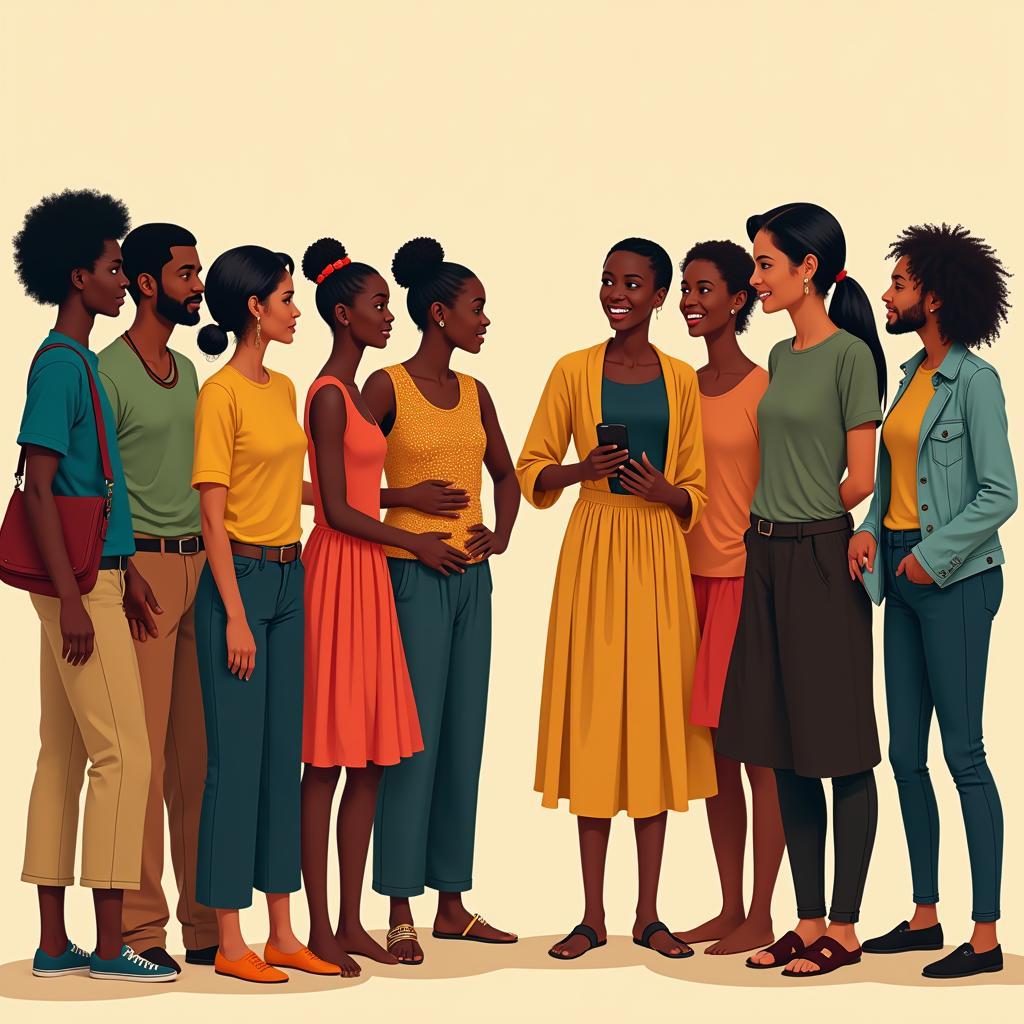The Colorful Tapestry of Friendship: Exploring African Friendship Bracelets
African Friendship Bracelets, also known as “bracelets of friendship,” are more than just colorful accessories. They are a vibrant testament to the rich cultural heritage of Africa, embodying the spirit of community, connection, and shared experiences. Woven with intricate patterns and vibrant colors, these bracelets symbolize the bonds of friendship, love, and kinship that unite people across generations and cultures.
A Legacy of Tradition: The Origins of Friendship Bracelets
The origins of African friendship bracelets can be traced back to ancient times, deeply rooted in the traditions and customs of various African communities. In many cultures, bracelets served as powerful symbols of identity, status, and affiliation. They were often crafted using materials readily available in the environment, such as beads, shells, fibers, and leather, reflecting the resourcefulness and ingenuity of the people.
These bracelets were not merely adornments; they were imbued with meaning and purpose. They represented a commitment to friendship, loyalty, and solidarity, signifying a deep connection between individuals. The act of creating and exchanging these bracelets served as a powerful ritual, strengthening bonds and fostering a sense of belonging.
The Art of Creation: Techniques and Materials
The creation of African friendship bracelets is an art form, requiring patience, skill, and an appreciation for the intricate details involved. Traditionally, these bracelets were handcrafted using techniques passed down through generations, with each community developing its own unique styles and patterns.
The most common techniques include:
- Braiding: This involves weaving strands of materials together, creating intricate patterns and designs.
- Knotting: This technique uses knots to create a secure and durable bracelet, often incorporating beads or charms.
- Macrame: This intricate knotting technique creates elaborate and decorative designs.
The materials used in crafting these bracelets vary widely, depending on the region and availability:
- Beads: From colorful glass beads to natural materials like wood, bone, and shell, beads add a touch of sparkle and personality.
- Fibers: Natural fibers like cotton, wool, and leather are commonly used, providing durability and a natural aesthetic.
- Threads: Brightly colored threads, often made from synthetic materials, are popular for creating intricate designs.
- Other materials: Feathers, shells, and even animal hair are sometimes incorporated, giving each bracelet a unique character.
Beyond Ornamentation: The Significance of Patterns and Colors
The colors and patterns used in African friendship bracelets carry a rich symbolic meaning, often reflecting the diverse cultural beliefs and traditions of the communities where they originated.
- Colors: Red might signify passion and love, while blue represents peace and tranquility. Yellow symbolizes happiness and sunshine, while green represents growth and prosperity.
- Patterns: Geometric patterns often represent specific symbols or concepts, while animal motifs might symbolize strength, wisdom, or protection.
Modern Interpretations: A Timeless Tradition Renewed
Today, African friendship bracelets continue to be a popular form of expression, embraced not only within Africa but also by people worldwide. They are seen as a symbol of unity, diversity, and the power of human connection.
The popularity of these bracelets has led to a revival of traditional crafting techniques, with artisans and designers drawing inspiration from the rich tapestry of African cultures. From modern interpretations to vintage designs, African friendship bracelets offer a unique and meaningful way to celebrate friendship, culture, and individuality.
Finding the Perfect Bracelet: A Guide for Collectors
If you’re interested in exploring the world of African friendship bracelets, there are a few things to keep in mind when choosing your own:
- Authenticity: Look for bracelets crafted by artisans using traditional techniques and materials.
- Symbolism: Consider the meaning behind the colors and patterns, and choose a bracelet that resonates with your personal values or beliefs.
- Quality: Choose a well-made bracelet that is durable and comfortable to wear.
Frequently Asked Questions:
Q: What is the best way to care for my African friendship bracelet?
A: To keep your bracelet looking its best, avoid exposing it to excessive moisture and harsh chemicals. Gently clean it with a soft cloth or a mild soap solution.
Q: How do I find authentic African friendship bracelets?
A: Look for bracelets made by artisans, either online or at local markets and craft fairs.
Q: What are some popular styles of African friendship bracelets?
A: Popular styles include those featuring traditional patterns, animal motifs, and bright colors.
Q: Are African friendship bracelets a good gift?
A: Absolutely! They are a thoughtful and unique gift that can represent your friendship and appreciation.
Embrace the Spirit of Friendship: A Colorful Legacy
African friendship bracelets are a testament to the enduring power of human connection. They remind us of the importance of community, kinship, and the shared values that bind us together. Whether you’re a collector, a traveler, or simply seeking a meaningful way to express your friendship, these bracelets offer a vibrant and enduring legacy that will continue to inspire generations to come.
